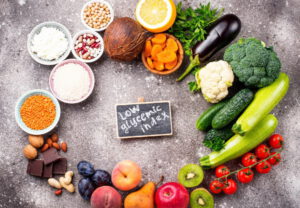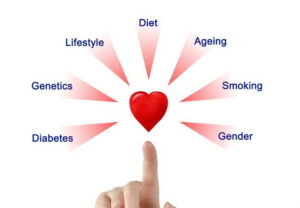The glycemic index helps us to understand which foods are best and worst for managing our blood glucose levels. When blood glucose levels get too high, insulin is released right into the bloodstream by the pancreas to assist the spread of the glucose. The insulin carries the glucose to cells needing extra energy. The cells have “insulin receptors” positioned so that insulin can bind to them, facilitating glucose entry and utilization in the cells.
Once inside the cells, the glucose is burnt to produce heat and adenosine triphosphate, (ATP) a molecule that stores and releases energy as needed by the cell. When cells become less sensitive to the effects of insulin, they accept less glucose, so more glucose than usual remains in the bloodstream. The result is the pancreas over-compensates by functioning harder and releasing even more insulin.
The combination of insulin insensitivity and over-production commonly leads to one of 2 results: Either, the pancreas gets broken and insulin production slows down to an abnormally low level. The result is we develop type 2 diabetes. (About 30 percent of cases) Or, the insulin-resistant patient does not develop diabetes (since the pancreas continues to produce enough insulin) however, instead, contracts hyperinsulinism (abnormally high levels of insulin in the blood), which can cause chronic obesity along with high blood pressure, high degrees of triglycerides, high LDL (bad cholesterol), heart problem, and possibly some cancers cells.High GI foods are carbohydrate foods that are quickly broken down by the body and cause a rapid increase in blood sugar levels.

Some high GI foods are:
- sugar and sugary foods
- sugary soft drinks
- white bread and white rice
- potatoes
Low GI foods are foods that break down more slowly and cause a gradual rise in blood sugar levels over time.

Some examples are:
- some fruit and vegetables
- pulses
- wholegrain foods, such as porridge oats






